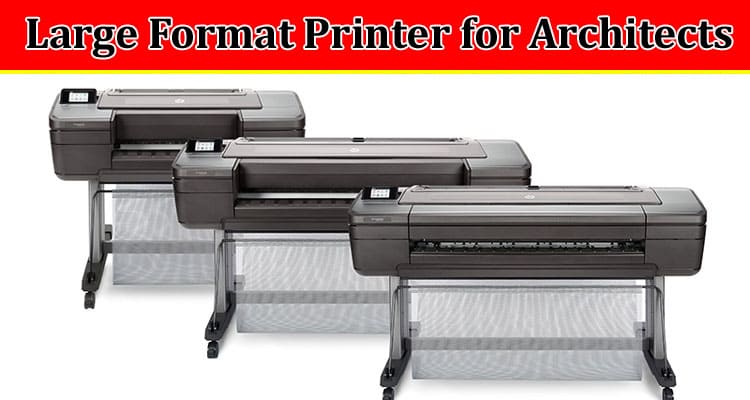In architecture, a picture is worth far more than a thousand words. Detailed, accurate, and high-quality technical drawings are the backbone of the profession. To accomplish this level of clarity, having the right tools is indispensable; a large format printer holds paramount importance among these tools. The best large format printer for architects is essential for producing impeccable technical drawings that capture every minute detail. This article will delve into choosing the right large-format printer to elevate architectural prints to a new level.
Understanding the Significance of High-Quality Prints
First and foremost, let’s grasp why high-quality prints are so vital for architects:
- Precision: Architectural drawings require absolute accuracy. A small error can have significant ramifications.
- Detail: The ability to capture intricate details is crucial.
- Presentation: Quality prints make a strong impression on clients and stakeholders.
Zeroing In on the Best Large Format Printer
There’s a plethora of options when it comes to large-format printers. But how does one pick the best large-format printer for architects?
- Resolution: Look for high resolution. Generally, a resolution of 1200 dpi or higher is recommended for architectural prints.
- Speed: Time is often of the essence in architecture, so a printer that can produce high-quality prints quickly is advantageous.
- Media Handling: The printer should be able to handle various media types, including multiple kinds of paper and even fabric.
- Ink Type: Pigment inks are usually preferable for architectural drawings as they are more fade-resistant than dye.
- Size: Ensure the printer can handle the sizes of prints needed. For architects, A1 and A0 are common sizes.
- Customisation and Scalability: As the needs and complexity of projects may evolve over time, having a printer that offers customisation and scalability is vital. Some large format printers provide options for additional accessories such as scanners or extra paper trays. This adaptability enables architects to scale their printing capabilities to meet the demands of bigger or more intricate projects without investing in a completely new system.
- Customer Support and Warranty: A printer is a significant investment, and having reliable customer support is reassuring. Before making the purchase, check if the manufacturer offers adequate customer support, including troubleshooting and repair services. In addition, assess the warranty terms. A full warranty can be indicative of the printer’s quality and the manufacturer’s commitment to customer satisfaction. It is also essential to understand what the warranty covers – whether it includes parts, labour, or both, and the duration of the coverage.
Investment and Operating Costs
While the initial investment is a critical factor, it’s equally important to consider the operating costs.
- Ink Costs: Calculate the cost of ink cartridges and their estimated lifespan.
- Maintenance: Consider the maintenance requirements and associated costs.
- Power Consumption: Evaluate the energy efficiency as it impacts the electricity bills.
Maximising the Output Quality
After acquiring the best large format printer for architects, the following steps can help in maximising the output quality:
- Calibration: Regularly calibrate the printer for colour accuracy and precision.
- Software Updates: Keep the printer’s software up-to-date.
- Quality Media: Use high-quality media that is compatible with the printer.
- Proper Maintenance: Clean and maintain the printer as recommended by the manufacturer.
To Sum It Up:
Investing in a large-format printer for architects can yield precise and detailed technical drawings, ultimately enhancing professionalism. With myriad options available, weighing the features, costs, and maintenance requirements to make an informed choice is essential. The right printer enhances the quality of work and becomes an invaluable asset in an architect’s toolkit, enabling them to bring their visionary designs to life with unmatched clarity. With every line, angle, and shade accurately represented, architects can confidently present their masterpieces to a client or a construction team.





